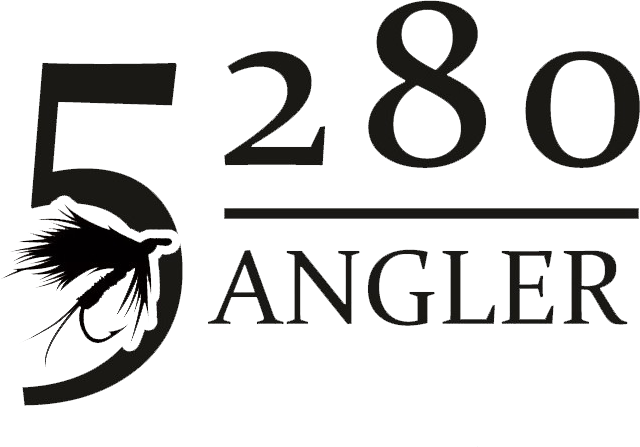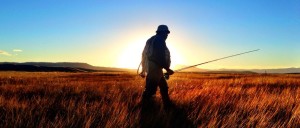
ed. note: 5280 Angler guides were recently asked by John Lewis from the Epic Wilderness Blog to contribute top three tips for beginning anglers, as part of a compilation of tips from fly fishing pros all around the country. Below, you’ll find John’s intro to the massive collection of expert tips, as well as the tips shared by our 5280 Angler guide staff. To view the entire post, click HERE.
These are just the sort of tips and tricks we love to share during our guided fly fishing trips!
47 Experts Share Their 3 Best Fly Fishing Tips
Fly fishing is fun–I am sure you will agree with me. But the thing is, there are so many things you will have to know, learn and practice to be somewhat good in it especially if you are just starting out. What are the most important aspects to focus on? Do you need a fly fishing mentor? (Hint: yes)
While learning from failure is great, I always believe in learning from others’ past experiences. In hopes of helping you to focus only on the things that are important, I asked over 80+ fly fishing experts this question: What are the 3 most important things you wish you knew when you started fly fishing?
And as the title pointed out, 47 of them took the effort to come up with useful insights which I listed down below. But before that, I would like to thank them for their time and passion for the fly fishing community. Others wanted to contribute as well, but they are just too caught up with their personal matters which I can relate to myself.
Is this relevant for beginners only? Absolutely not! I had gone through each and every answer and I have to say, they were nothing short of amazing.
Also, being curious myself, I did a quick summary on some of the common things they wished they knew/did when they first got started.
| TIPS |
Vote |
|---|---|
| Importance of Presentation | 18 |
| Learn to read the water | 13 |
| Find a fly fishing guide/mentor | 11 |
| Don’t be afraid to ask for advise | 9 |
| Learn to read the fish | 4 |
| Proper planning is important | 3 |
| Importance of Flies | 5 |
| Line management | 5 |
| Any fly fishing gear will do | 2 |
| Don’t rush, be patient | 2 |
RESPONSES FROM THE 5280 ANGLER TEAM:
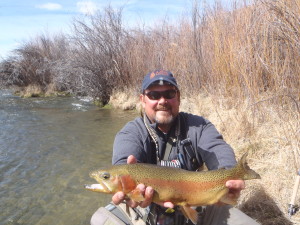
Gene Rea – 5280 Lead Guide
“The three most important things I wish I knew when I first started–keep in mind I was 9 years old when I first started so I’ll approach this from the point of view that I am an adult getting started.”
First, Proper rig set up. This is critical as I have seen a lot of folks on the river with improper set up. Incorrect weight for the type of water being fished and weights either too close, or too far away from the point fly (12 to 15 inches above the point fly). Indicators (if you use them) not properly adjusted for depth of water – 1 to 1.5 times the depth of the water above the weights. Proper leader size and length for the type of water being fished as well as size of fish being pursued. I typically use 7.5 to 9 ft monofilament leaders – then run about a 12″ to 15″ section off the end of the leader either using a blood knot, or a surgeon’s knot. It is above this knot that I place my weights if using them. I tie off my point fly at the end of that section of tippet. From that point on I run fluorocarbon tippet between the flies on a multi-fly rig. There are some very good tutorials out there and also a guide can help the new angler with this.
Second, fly selection. I don’t know how many times I’ve witnessed folks presenting flies that were inappropriate for that time of the year or the wrong size. A basic understanding of stream entomology is essential in helping make the correct fly choice when fishing any water. This is something every new fly fisherman should learn. Again, this is where a guide, or classroom instruction, can be very helpful.
Third, and probably most important, presentation of the flies. It does no good to set your rig up, have the correct flies, then make poor presentations to the fish. You can get all the other factors correct but if you aren’t making good accurate presentations (drifts) you won’t be hooking fish, or you will hook fewer. You must always compensate for drag that is where mending and high sticking are very critical on each and every drift. I tell my clients that “If you are not high sticking you are mending, if you aren’t mending you are high sticking, if you do nothing you will catch nothing“.
“Tight lines fellas and FlyGals!”
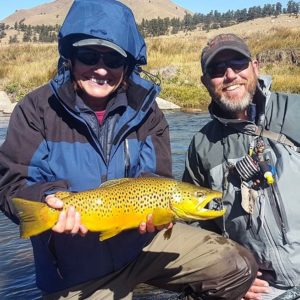
Jeremy Hamilton – 5280 Guide
“When I first started fly fishing I was about 9 or 10 years old. It wasn’t until I was 16 or 17 that I really started trout fishing and there are definitely a few things I wish I had known to shorten the learning curve.”
The first is that there are several techniques to fly fishing, not just dry flies. Of course, everyone wants to be like Brad Pitt and stand on a big rock making an amazing cast with a dry fly to a monster fish. That’s the romantic view anyway. The reality is that you can catch a lot more fish subsurface than you can on the surface, and usually within a few feet of your rod tip. It’s not sexy, but it’s effective. It took me several years before I understood just how effective subsurface flies can be. Had I started out with that knowledge I could have eliminated a lot of fishless days.
Second, I wish I would have realized that the number of fish caught is not necessarily the measuring stick for a good day of fishing. As a teenager I’d get skunked and think it was a bad day. I failed to recognize that the beauty that surrounded me was infinitely more rewarding than just catching fish. Additionally, it took me a while to realize there were a lot of lessons to be learned when I wasn’t getting the fish to bite.
Lastly, I wish I would have latched on to a fly fishing mentor a bit more. There’s no quicker way to gain knowledge than to absorb someone else’s. I never really sought out help when I should have. I always tried to figure things out on my own, with lots of failure. My father and I fished together a lot, but he was learning fly fishing at the same time as me. It was fun and a lot of great memories were made, but it wasn’t great for my development as a fly angler. Had I known that there a lot of people out there just aching to share their knowledge, again, it would have shortened my learning curve. Once I became a guide and became exposed to lots of great ideas and knowledge, from a lot of great people along the way, I really started to develop skills as well.
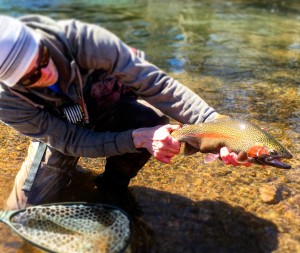
Ben Helgeson – 5280 Guide/Communications
“You’re right there are lots of confusing variables to consider when chasing trout with a fly rod!
The hurdle then, really, for beginning anglers is to navigate all the variables with CONFIDENCE. So, in answering your question, I’m going to place my emphasis on three tips that would help any angler to approach the river with more confidence.”
1. Read the water/find the fish – I think, for beginning anglers, even a small stream can feel like a vast ocean – creating a general bewilderment over the very question: “Where the heck are the trout?” Although there are lots of web articles and YouTube videos related to the topic of “reading water” to find fish. I believe there is no substitute for going out with a professional guide for some hands-on instruction in reading water to find fish. Looking at a photograph, video, or illustration of a current seam, structure, riffle, pool, or run just isn’t the same as experiencing it for real with a professional interpreter (guide). In connection with that, I always recommend purchasing the best pair (both in fit and lens quality) of polarized fishing glasses you can buy.
2. Build a quality nymph rig – I see a lot of frustration and confusion around building a functional nymph fishing rig. I think, at the core of the frustration is not fully understanding where fish are in the river and how they feed (see tip#1), but there are also questions around leader length/diameter, knots, weight, indicator positioning, and spacing between flies. There are a lot of excellent YouTube videos, articles, and diagrams available on this topic. 5280 Angler guide Ron Pecore posted this on our blog: 5280 ANGLER GUIDE HACKS – Ron’s Rigs
3. Focus on quality presentation – Entomology for the beginning fly angler can be HUGELY overwhelming–combined with the dizzying array of fly patterns available in local shops. As a result, beginning anglers can develop an almost paralyzing insecurity regarding their fly selection. This lack of confidence causes frequent changing of fly patterns, which is time–consuming and frustrating as beginners are often not quite as quick or proficient with their knots. Instead of all the muss and fuss over fly selection–beginning anglers should instead focus on developing an ability to present their fly to the fish, rather than worrying so much about whether or not they have the perfect fly pattern on the end of their leader.
CLICK HERE TO READ THE FULL POST FROM EPIC WILDERNESS

